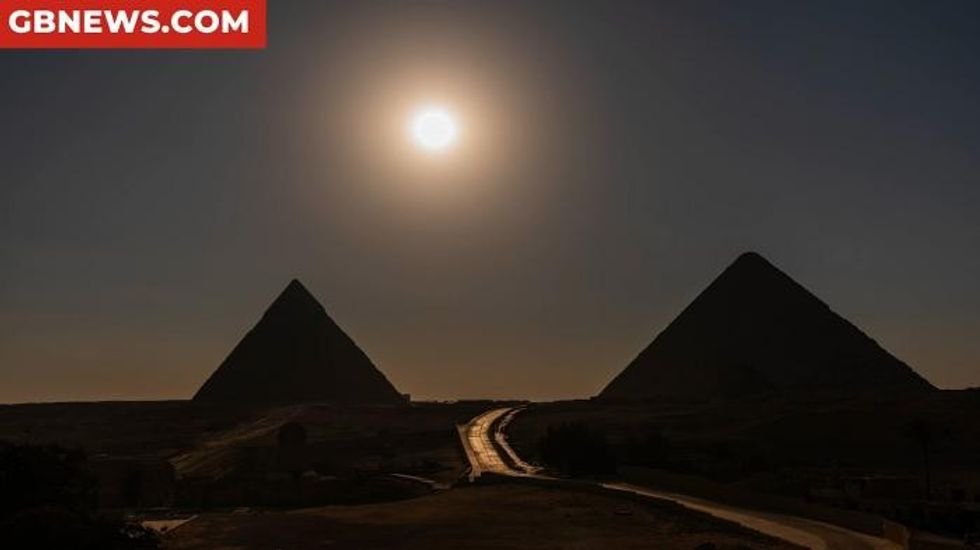A collection of historic markings in Egyptian mines might comprise a message from Moses himself.
Researcher Michael Bar-Ron has proposed that inscriptions courting again 3,800 years embrace a Hebrew phrase which means: "That is from Moses".
The markings have been found at Serabit el-Khadim on Egypt's Sinai Peninsula, and are written within the Proto-Sinaitic script, thought of amongst the world's oldest alphabetic writing programs.
Bar-Ron suggests these texts may present the primary ever archaeological proof of the biblical determine who freed the Israelites from Egyptian bondage.
The inscriptions have been first uncovered within the early 1900s close to Mine L, near the realm generally known as Sinai 357.
These Proto-Sinaitic texts have been probably carved by Semitic-speaking labourers throughout Egypt's late twelfth Dynasty in roughly 1,800 BC.
Bar-Ron devoted eight years to analyzing detailed 3D scans and high-resolution pictures of the markings.

His analysis centered on 22 intricate inscriptions from the traditional turquoise mining website, which operated throughout Pharaoh Amenemhat III's reign.
The script represents an early model of Northwest Semitic, bearing similarities to biblical Hebrew while displaying influences from Aramaic.
Bar-Ron utilised sources from Harvard's Semitic Museum to classify the inscriptions into 5 distinct teams based mostly on their content material and traits.
He has additionally make clear spiritual tensions among the many mine employees.
Some carvings honouring the goddess Baʿalat present indicators of deliberate defacement by these worshipping El, the deity linked to early Israelite religion.
MORE BIBLICAL BREAKTHROUGHS:
- Archaeology breakthrough as stunning discovery 'proves' biblical account of main loss of life
- Archaeologists make 'biblical discovery' as they establish potential 'Promised Land' reached by Moses
- Archaeologists get better historic seal confirming 2,700-year-old biblical account

Bar-Ron instructed Patterns of Proof: "We discover worshipful inscriptions lauding the idol Ba'alat, with clearly an El or God-serving scribe coming in later and cancelling out sure letters, in an effort to show the message right into a God-serving one. That is floor zero for this battle."
The texts comprise mentions of slavery, whereas a burnt temple devoted to Baʿalat suggests a violent revolution.
References to the "Gate of the Accursed One", presumably indicating a Pharaoh's entrance, and a touch at opposition to Egyptian rule.
A second potential reference to "Moshe" seems in adjoining carvings, although its which means stays ambiguous.
His findings have sparked important debate amongst students, nevertheless.
LATEST ARCHAEOLOGY HEADLINES FROM GB NEWS:
- Archaeology breakthrough as human stays found in 100,000-year-old secret cave
- Archaeologists uncover 4,000-year-old handprint on historic Egyptian clay mannequin in likelihood discover
- Grisly historic Egyptian burial thriller solved after corpses discovered torn limb-from-limb

Dr Thomas Schneider, an Egyptologist on the College of British Columbia, dismissed his findings as "utterly unproven and deceptive", cautioning that "arbitrary" letter identifications may misrepresent historic historical past.
Bar-Ron's educational supervisor, Dr Pieter van der Veen, stated: "You're completely appropriate, I learn this as properly, it’s not imagined!"
The controversy stems partly from Proto-Sinaitic's notoriously difficult nature – with lecturers struggling to cope with what's stated to be the world's earliest alphabetic system.
Bar-Ron's analysis, which hasn't undergone peer overview, makes an attempt to hyperlink these historic employees to biblical narratives, together with potential connections to Joseph, the high-ranking official in Pharaoh's courtroom described in Genesis.
